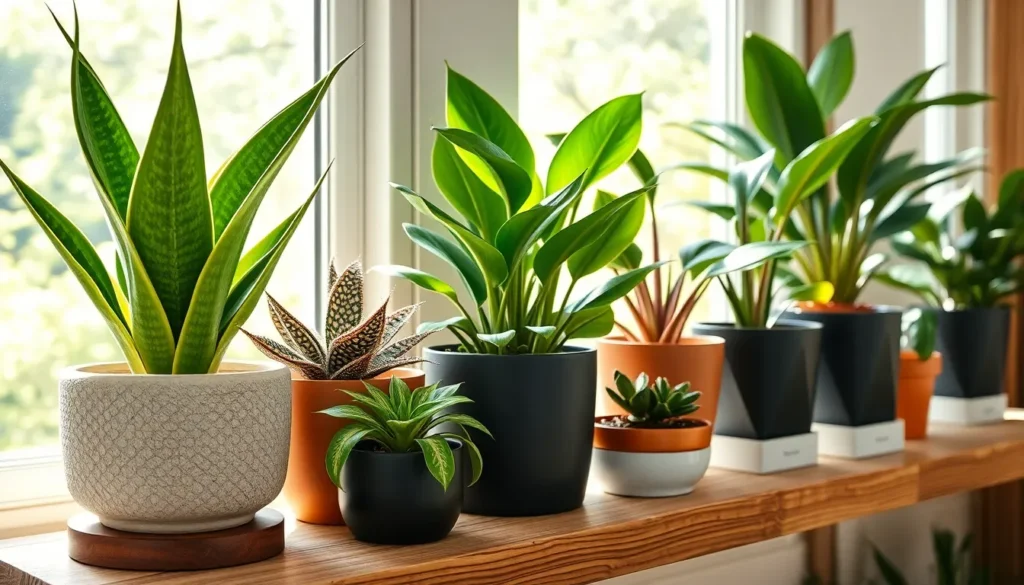Welcome to a world where lush greenery thrives with minimal effort, a dream come true for both new and seasoned gardeners alike! “Top 10 Indoor Plants for Low Maintenance” is your ticket to transforming any indoor space into a vibrant sanctuary, with plants that promise beauty without the fuss. Whether you’re just starting your gardening journey or you’ve been nurturing plants for years, this guide offers a practical and delightful way to enhance your home with ease.
In this carefully curated list, you’ll discover plants that are as forgiving as they are stunning, making them perfect companions for busy lifestyles. These selections not only bring the joy of nature indoors but also offer tangible benefits, like improving air quality and boosting your mood. With our expert tips and insights, you’ll feel confident in your ability to cultivate these resilient beauties, ensuring your indoor garden flourishes with minimal maintenance. Embrace the rewards of successful gardening, where each thriving leaf and bloom is a testament to your green-thumb prowess.
Snake Plant (Sansevieria trifasciata)
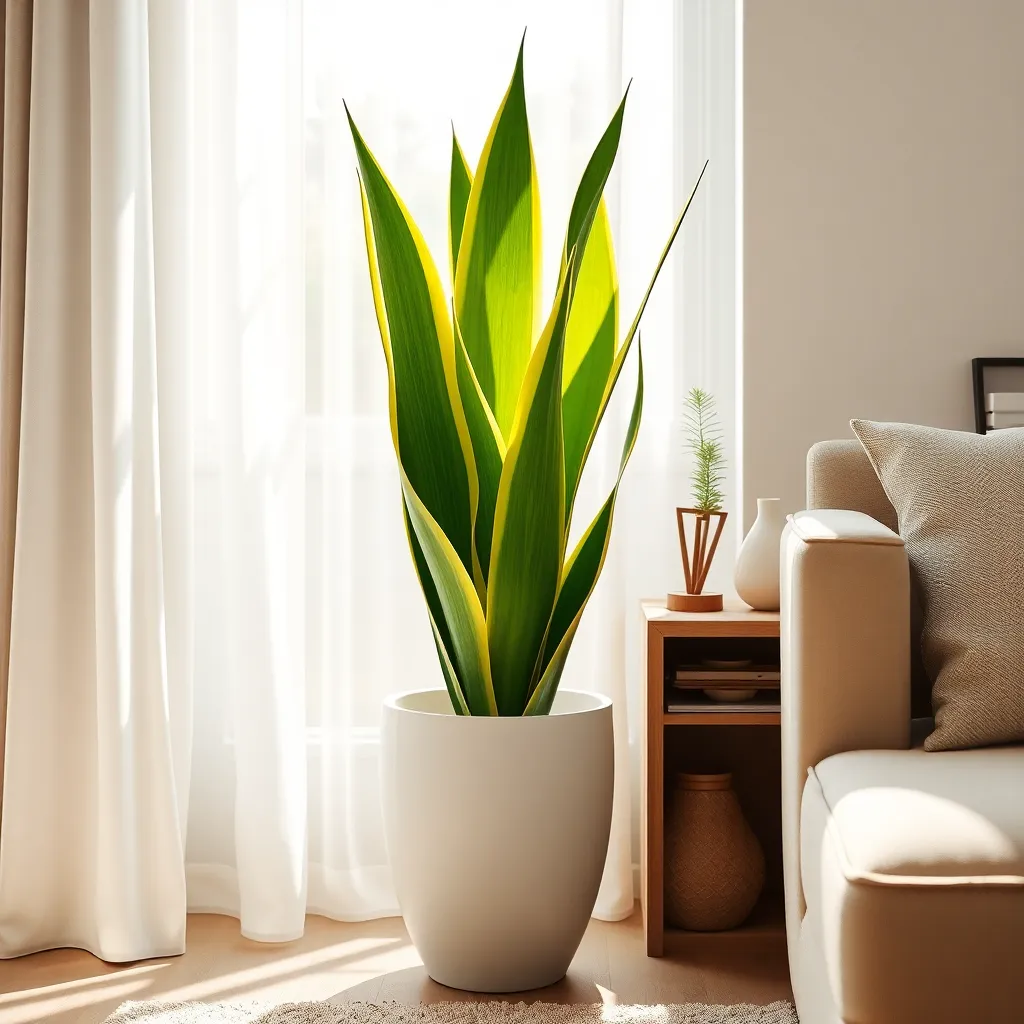
The Snake Plant, also known as Sansevieria trifasciata, is a top choice for those seeking a hardy indoor plant. Known for its striking upright leaves, this plant can thrive in a range of environmental conditions, making it ideal for beginners and seasoned gardeners alike.
When it comes to lighting, Snake Plants are versatile and can adapt to both low-light and bright, indirect sunlight. However, they grow best when placed in moderate indirect light, which helps maintain their vibrant leaf pattern.
Watering is straightforward for Snake Plants, as they are drought-tolerant and require minimal maintenance. Allow the soil to dry out completely between waterings, typically every two to six weeks depending on the humidity and temperature of your home.
For optimal growth, use a well-draining potting mix such as a cactus or succulent blend to prevent root rot. Advanced gardeners can propagate Snake Plants easily by dividing the rhizomes or leaf cuttings, offering a rewarding challenge for those looking to expand their plant collection.
Pothos (Epipremnum aureum)
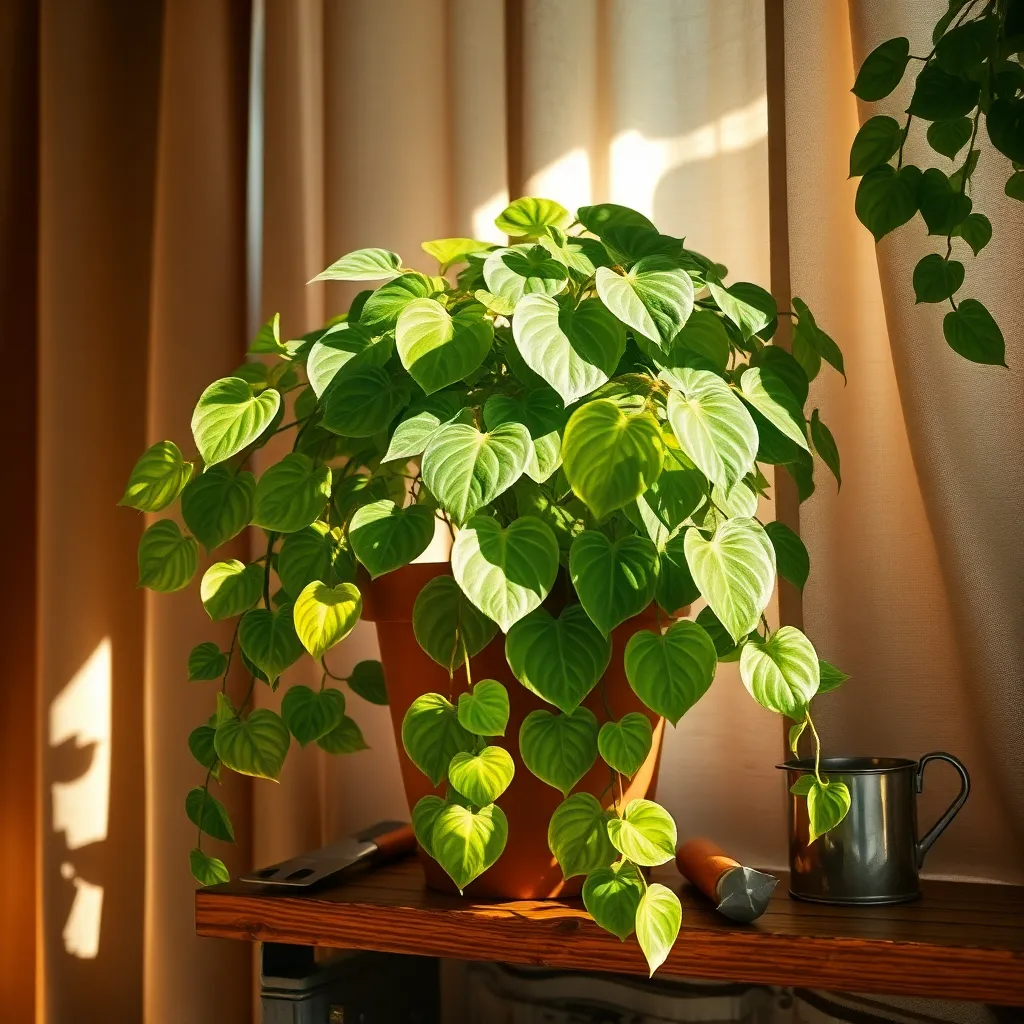
Pothos (Epipremnum aureum), often celebrated for its vibrant trailing vines, is an ideal choice for those seeking a low-maintenance indoor plant. This resilient plant thrives in a range of lighting conditions but performs best in bright, indirect sunlight.
To keep your Pothos healthy, water it whenever the top inch of soil feels dry. Overwatering is a common mistake, so ensure your pot has drainage holes and consider using a well-draining soil mix, such as a combination of peat moss and perlite.
While Pothos is forgiving with occasional neglect, it’s beneficial to fertilize it every 4-6 weeks during the growing season with a balanced, water-soluble fertilizer. For those looking to propagate, simply snip a stem below a node and place it in water until roots develop, then transfer to soil.
Advanced gardeners might explore training their Pothos to climb up a moss pole or trellis, enhancing its ornamental appeal. Regular pruning not only maintains the plant’s shape but also encourages bushier growth, providing a lush, green display year-round.
ZZ Plant (Zamioculcas zamiifolia)
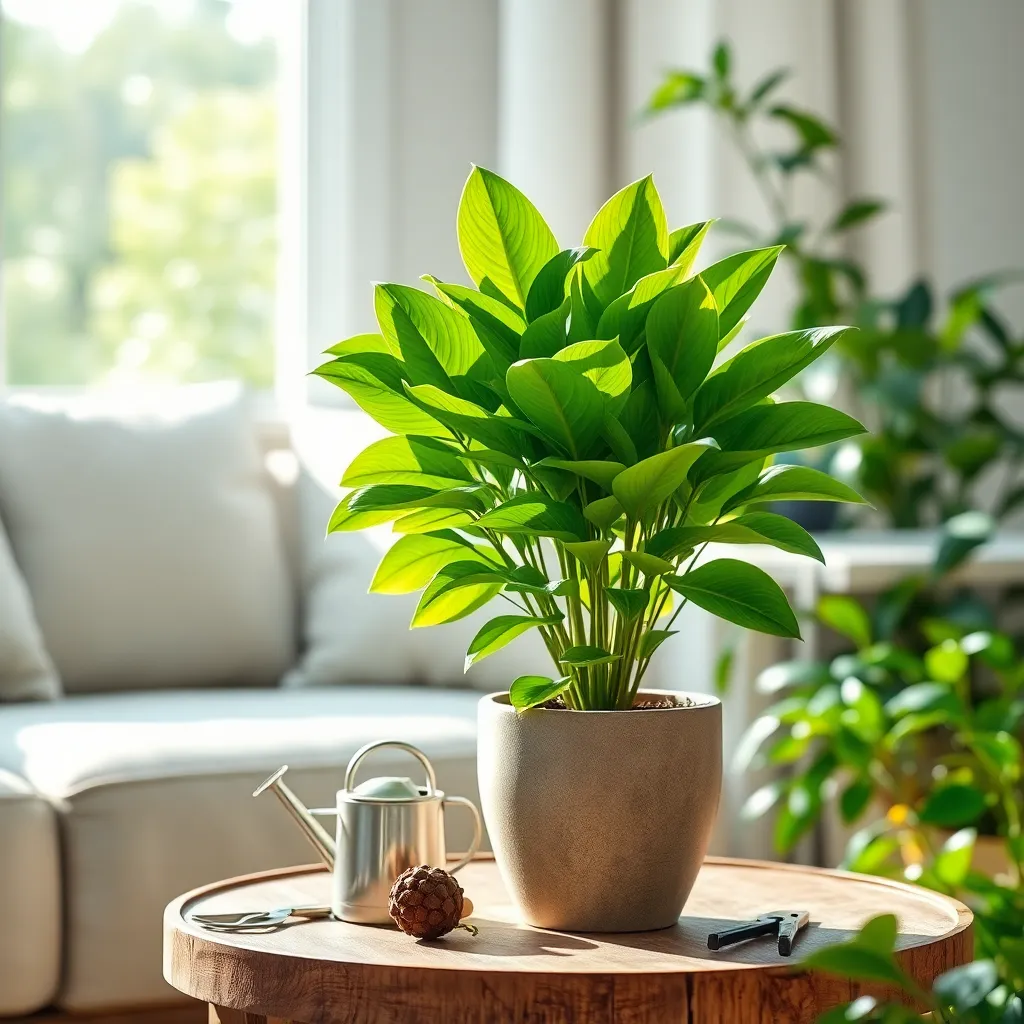
The ZZ Plant, or Zamioculcas zamiifolia, is a superb choice for those seeking low-maintenance indoor greenery. Known for its ability to thrive in low light and with infrequent watering, it’s perfect for beginners and busy plant owners alike.
To keep your ZZ Plant healthy, place it in a location with indirect light, though it can tolerate lower light conditions. Water sparingly, allowing the soil to dry out completely between waterings to prevent root rot.
For optimal growth, use a well-draining potting mix, such as one designed for cacti or succulents, to ensure excess moisture does not accumulate. Avoid over-fertilizing by feeding with a balanced, water-soluble fertilizer just once or twice a year during the growing season.
Advanced gardeners might consider occasional repotting every two to three years to refresh the soil and provide room for growth. Check for signs of root-bound plants, such as roots growing out of drainage holes, as an indicator that repotting is needed.
Peace Lily (Spathiphyllum wallisii)
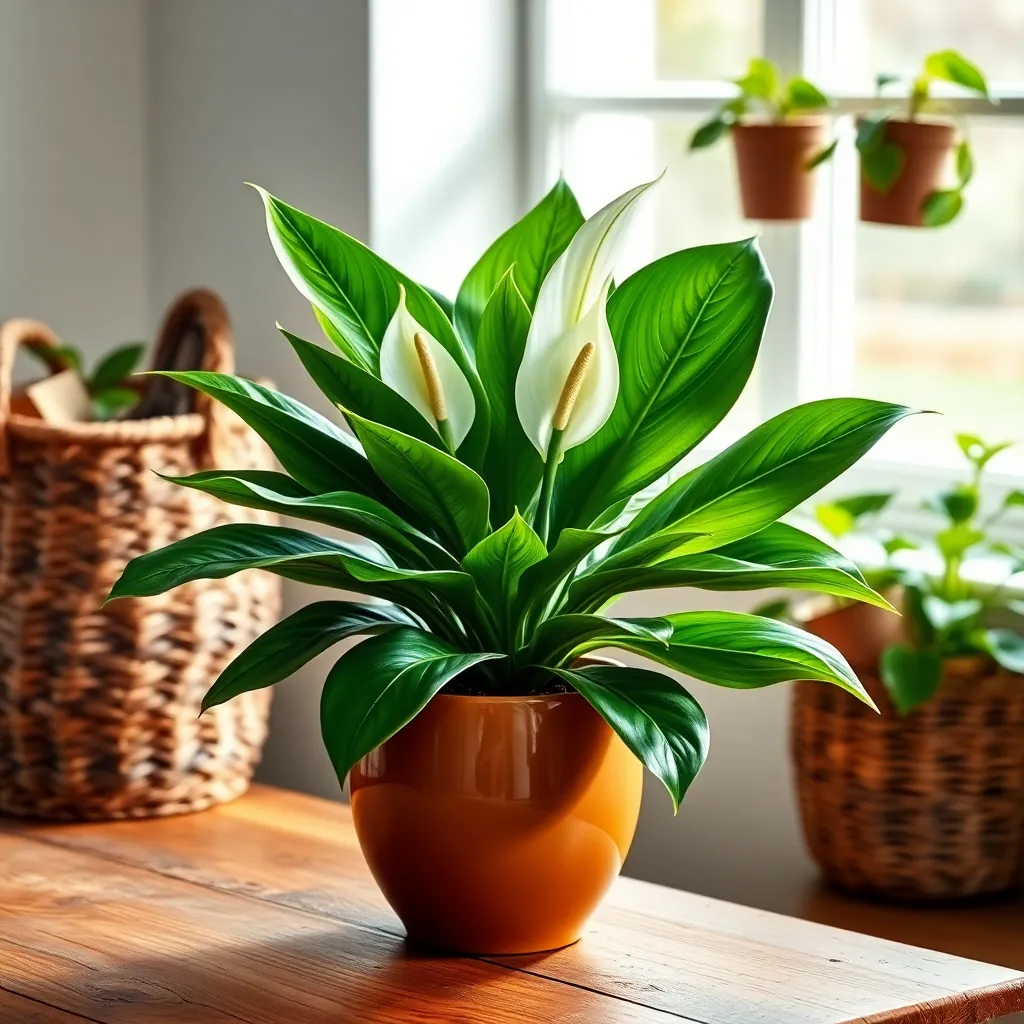
The Peace Lily (Spathiphyllum wallisii) is a popular choice for indoor gardeners seeking a low-maintenance yet elegant plant. Known for its glossy green leaves and striking white flowers, it thrives in low light, making it perfect for spaces with limited sunlight.
To keep your Peace Lily healthy, water it when the top inch of soil feels dry to the touch. Be mindful not to overwater, as this plant prefers slightly moist but not soggy soil, and ensure it has good drainage to prevent root rot.
Peace Lilies enjoy a comfortable indoor temperature, ideally between 65°F to 85°F. They appreciate high humidity, so consider misting the leaves regularly or placing a humidity tray nearby to mimic their natural tropical environment.
For experienced gardeners, fertilizing your Peace Lily every 6-8 weeks during the growing season can enhance its growth. Use a balanced, water-soluble fertilizer at half strength to provide the necessary nutrients without overwhelming the plant.
Spider Plant (Chlorophytum comosum)
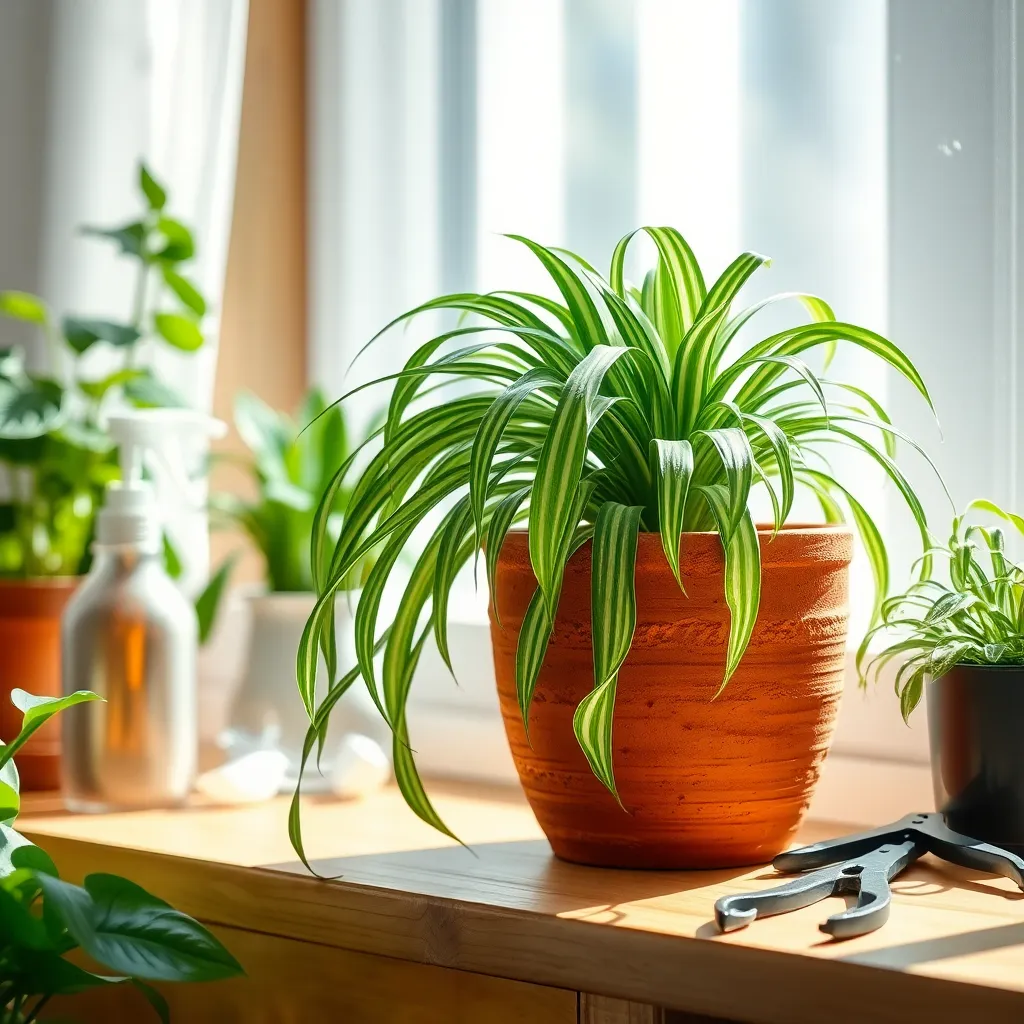
The Spider Plant (Chlorophytum comosum) is an excellent choice for those seeking a low-maintenance indoor plant. Known for its adaptability, it can thrive in a variety of lighting conditions, from indirect light to bright, indirect sunlight.
Watering this plant is straightforward, as it prefers to dry out slightly between waterings. Aim to water every 1-2 weeks, ensuring that the soil is dry to the touch before the next watering session.
Spider plants do well in a well-draining potting mix, such as a standard houseplant soil. For optimal growth, consider adding some perlite or sand to the potting mix to enhance drainage.
Fertilize sparingly with a balanced liquid fertilizer every month during the growing season to keep the plant healthy and vibrant. If you’re looking to propagate, these plants readily produce “pups” or plantlets that can be easily detached and replanted once they develop roots.
Aloe Vera (Aloe barbadensis miller)
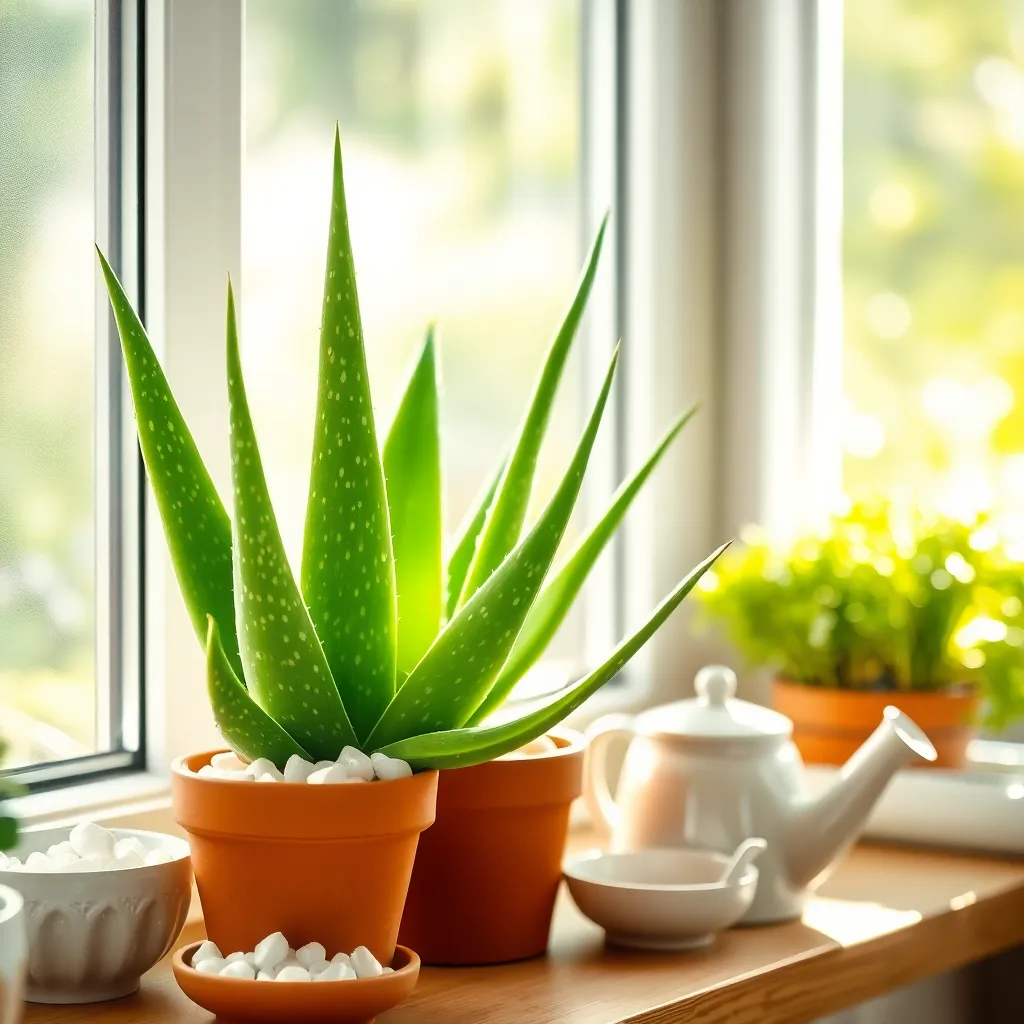
Aloe vera, known for its soothing gel, is a resilient plant that thrives indoors with minimal care. It flourishes in bright, indirect sunlight, making a sunny windowsill an ideal location.
To keep your aloe vera happy, use a well-draining soil mix, such as a cactus or succulent blend. This ensures that excess water drains quickly, preventing root rot, which is a common issue for this desert native.
Water your aloe vera sparingly, allowing the soil to dry out completely between waterings. Overwatering is the most frequent mistake, so aim for a schedule of watering every three weeks, adjusting based on humidity and temperature.
For those looking to propagate, aloe vera produces offsets, or “pups,” that can be easily separated and replanted. Simply remove the pup with a clean, sharp knife and let it dry for a few days before placing it in its own pot with similar soil conditions.
Chinese Evergreen (Aglaonema commutatum)
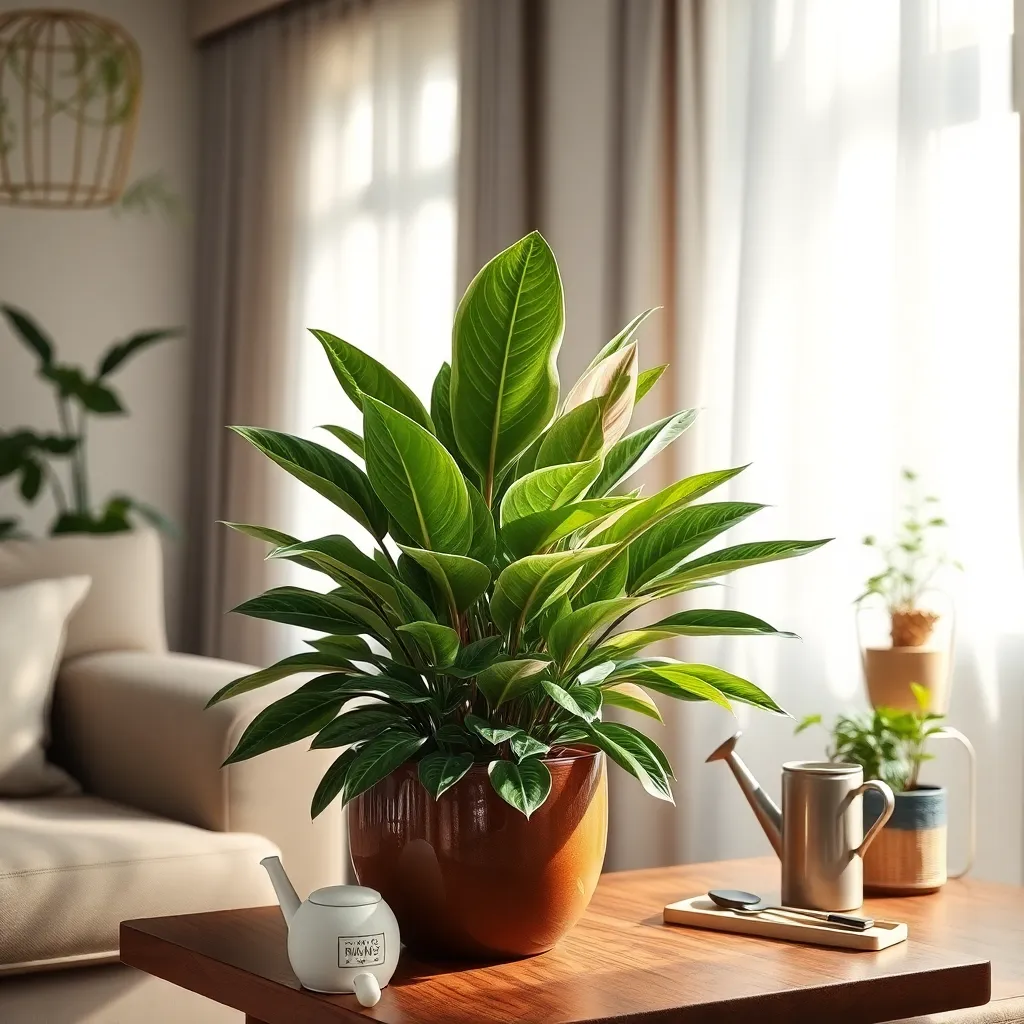
Chinese Evergreen (Aglaonema commutatum) is a fantastic choice for those seeking a low-maintenance indoor plant. Known for its stunning foliage, this plant thrives in low-light conditions, making it perfect for dimly lit rooms.
This hardy plant prefers a well-draining potting mix, such as a blend of peat, perlite, and sand. When watering, ensure the soil dries out between waterings to avoid root rot, typically every 1-2 weeks depending on your home’s humidity.
For optimal growth, place the Chinese Evergreen in a spot with indirect sunlight, though it can tolerate lower light levels. If you’re an advanced gardener, consider rotating the pot every few weeks to promote even growth and maintain its balanced shape.
Fertilizing is simple; apply a balanced, water-soluble fertilizer every two months during the growing season. Remember, this plant is sensitive to cold drafts, so keep it away from air conditioning vents or frequently opened doors.
Cast Iron Plant (Aspidistra elatior)

The Cast Iron Plant, scientifically known as Aspidistra elatior, is renowned for its resilience and ability to thrive in challenging indoor conditions. Perfect for beginners, this plant tolerates low light and irregular watering, making it an ideal choice for busy individuals.
When it comes to soil, the Cast Iron Plant prefers a well-draining mix, such as a combination of potting soil and perlite. Water sparingly, allowing the soil to dry out between waterings, as overwatering can lead to root rot.
Position your Cast Iron Plant in a spot that receives indirect light, although it can handle lower light conditions better than many other houseplants. For optimal growth, ensure temperatures remain between 60°F and 75°F, as this range supports healthy foliage development.
Advanced gardeners can occasionally feed their Cast Iron Plant with a balanced liquid fertilizer during the growing season to boost its lush foliage. However, this plant is quite forgiving and will still perform well even with minimal feeding.
Rubber Plant (Ficus elastica)
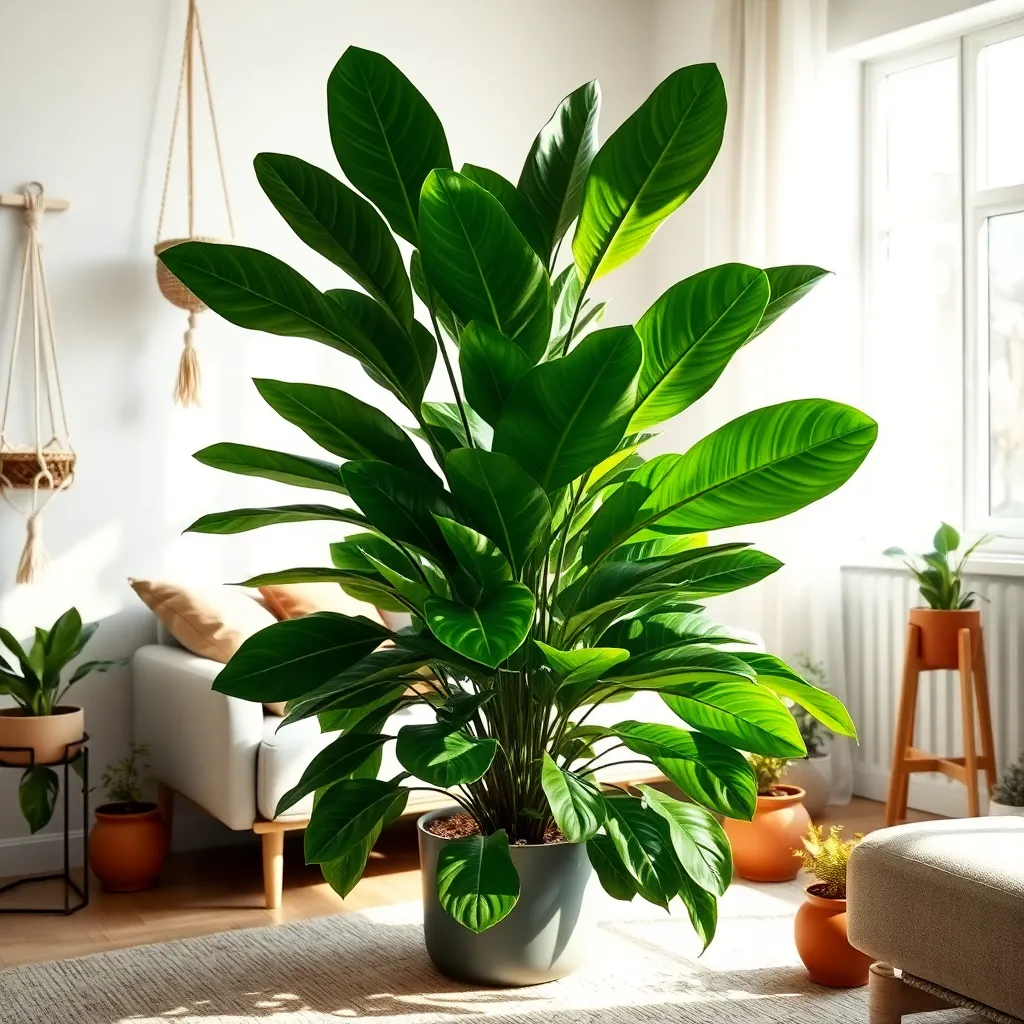
The Rubber Plant (Ficus elastica) is an excellent choice for those seeking a low-maintenance indoor plant. Known for its glossy, broad leaves, it adds a touch of vibrant green to any indoor space while being relatively easy to care for.
To thrive, the Rubber Plant prefers bright, indirect light, making it perfect for rooms that receive moderate sunlight. However, it can also tolerate low-light conditions, though this may slow its growth.
Watering is straightforward; allow the top inch of soil to dry out between waterings to prevent overwatering, which can lead to root rot. Use a well-draining potting mix, such as one designed for succulents, to ensure excess moisture is easily expelled.
For those looking to encourage growth, consider feeding the plant with a balanced liquid fertilizer monthly during the growing season. Pruning can help maintain its shape and size; simply trim back any unruly branches to promote a bushier appearance.
Jade Plant (Crassula ovata)
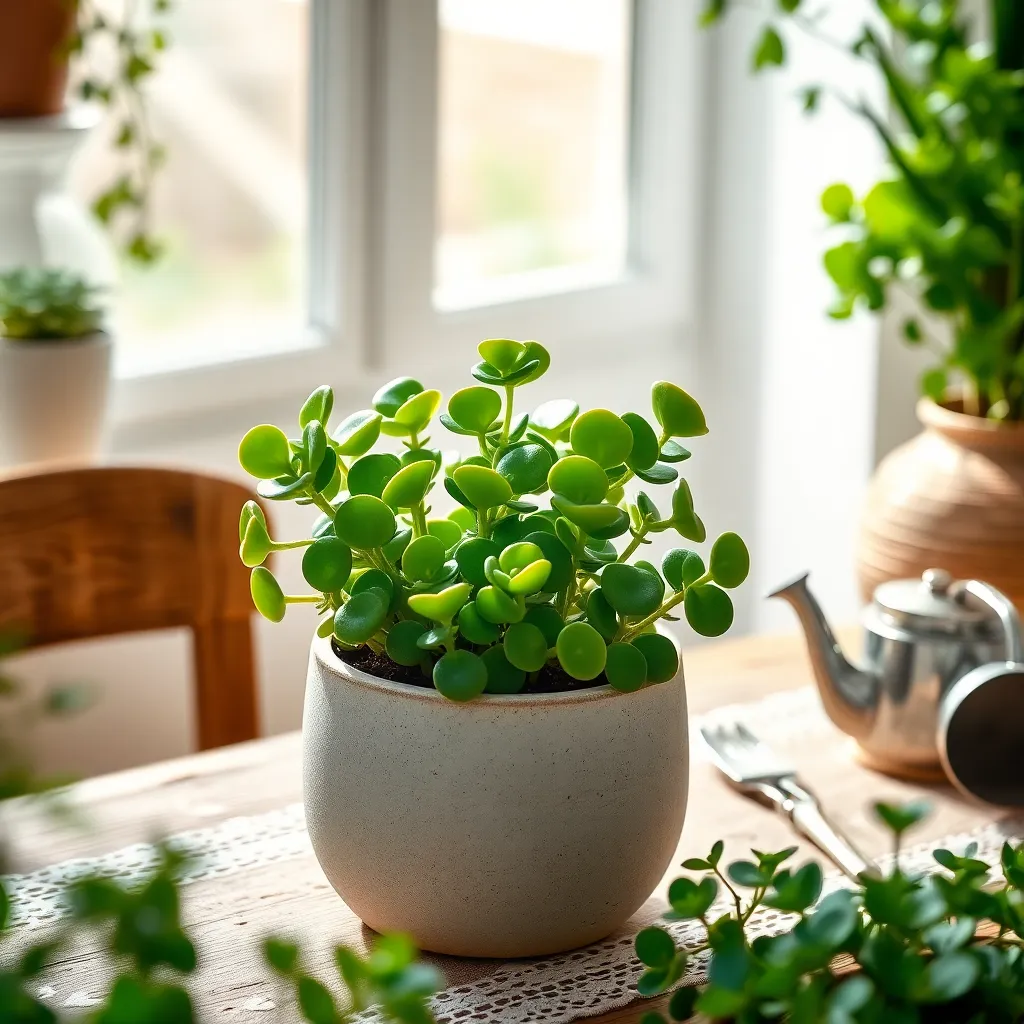
The jade plant, also known as Crassula ovata, is a popular choice for indoor gardeners due to its low-maintenance nature and attractive appearance. This succulent is especially well-suited for beginners who are just starting to explore the world of indoor gardening.
To thrive, jade plants require a bright location, preferably with some direct sunlight each day. If placed in low-light conditions, they may become leggy and lose their vibrant green color, so consider a south-facing window for optimal growth.
Watering jade plants is simple: allow the soil to dry out completely between waterings, then water thoroughly until excess moisture drains from the bottom of the pot. During the winter months, reduce the frequency of watering as the plant enters a dormant phase and requires less moisture.
For those looking to enhance their jade plant care, consider using a well-draining potting mix specifically designed for succulents. Adding perlite or coarse sand can improve drainage and prevent root rot, keeping your jade plant healthy and robust.
Conclusion: Growing Success with These Plants
In exploring the “Top 10 Indoor Plants for Low Maintenance,” we’ve delved into key relationship concepts that mirror the nurturing process of plant care. We highlighted the importance of patience, understanding individual needs, and providing consistent support, much like tending to a resilient Snake Plant or a forgiving ZZ Plant. We also discussed the value of adaptability with the flexible Pothos and the impact of creating a supportive environment, akin to the thriving Peace Lily. Each plant analogy underscored the essence of communication, trust, and growth in relationships, reminding us that even the simplest gestures can lead to flourishing connections.
Now, take a moment to reflect on one relationship in your life that could benefit from a little nurturing. Apply these plant-inspired lessons by reaching out with a small gesture of care today. Remember, every green thumb started with a single plant, just as every strong relationship started with a simple effort.
Bookmark this article as your guide to growing both your indoor garden and your relationships. As you weave these nurturing principles into your daily interactions, envision a future where your relationships thrive as effortlessly as your low-maintenance plants. Your journey to relationship success begins with the seeds you plant today.

